Related Research Articles

Dan Flavin was an American minimalist artist famous for creating sculptural objects and installations from commercially available fluorescent light fixtures.
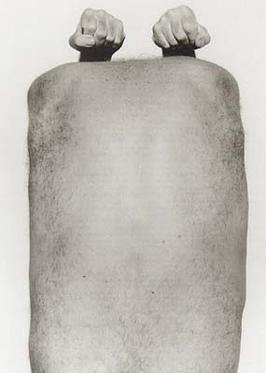
John Rivers Coplans was a British artist, art writer, curator, and museum director. A veteran of World War II and a photographer, he emigrated to the United States in 1960 and had many exhibitions in Europe and North America. He was on the founding editorial staff of Artforum from 1962 to 1971, and was Editor-in-Chief from 1972 to 1977.
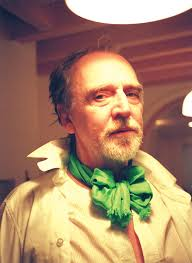
Rene Ricard was an American poet, actor, art critic, and painter.
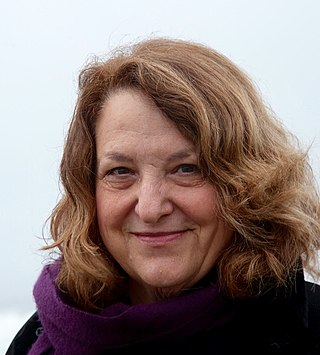
Lynn Hershman Leeson is a multimedia American artist and filmmaker. Her work combines art with social commentary, particularly on the relationship between people and technology. Leeson is a pioneer in new media, and her work with technology and in media-based practices helped legitimize digital art forms. Her interests include feminism, race, surveillance, and artificial intelligence and identity theft through algorithms and data tracking. She has been referred to as a "new media pioneer" for the prescient incorporation of new science and technologies in her work. She is based in San Francisco, California.
Barbara Gladstone is an American art dealer and film producer. She is owner of Gladstone Gallery, a contemporary art gallery with locations in New York and Brussels.

Marcia Tucker was an American art historian, art critic and curator. In 1977 she founded the New Museum of Contemporary Art, a museum dedicated to innovative art and artistic practice in New York City, which she ran as the director until 1999.
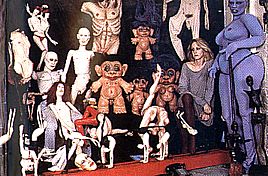
Greer Lankton, was an American artist known for creating lifelike sewn dolls that were often modeled on friends or celebrities and posed in elaborate theatrical settings. She was a key figure in the East Village art scene of the 1980s in New York.
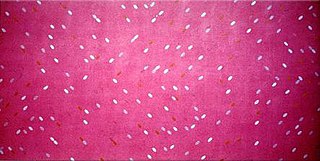
Lawrence M. "Larry" Poons is an American abstract painter. Poons was born in Tokyo, Japan, and studied from 1955 to 1957 at the New England Conservatory of Music, with the intent of becoming a professional musician. After seeing Barnett Newman's exhibition at French and Company in 1959, he gave up musical composition and enrolled at the School of the Museum of Fine Arts, Boston. He also studied at the Art Students League of New York. Poons taught at The Art Students League from 1966 to 1970 and currently teaches at the League.
Irving Sandler was an American art critic, art historian, and educator. He provided numerous first hand accounts of American art, beginning with abstract expressionism in the 1950s. He also managed the Tanager Gallery downtown and co-ordinated the New York Artists Club of the New York School from 1955 to its demise in 1962 as well as documenting numerous conversations at the Cedar Street Tavern and other art venues. Al Held named him, "Our Boswell of the New York scene," and Frank O'Hara immortalized him as the "balayeur des artistes" because of Sandler's constant presence and habit of taking notes at art world events. Sandler saw himself as an impartial observer of this period, as opposed to polemical advocates such as Clement Greenberg and Harold Rosenberg.
Foxy Production is a New York contemporary art gallery founded by Michael Gillespie and John Thomson.
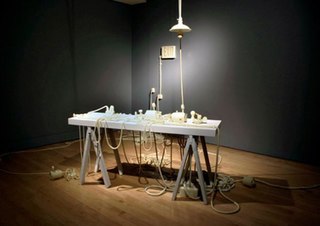
Jeanne Silverthorne is an American sculptor, known for cast-rubber sculptures and installations that explore the artist's studio as a metaphor for artistic practice, the human body and psyche, and mortality. She gained prominence in New York City in the 1990s, as one of several material-focused sculptors who critiqued the austere, male-dominated Minimalist movement by embracing humble, unorthodox media and hand-made, personal and ephemeral qualities championed by artists such as Eva Hesse and Louise Bourgeois. She treats the studio as a physical and conceptual site to be excavated, documented and inventoried, examining in the words of Sculpture's Jan Riley "the end of studio arts … and the impossibility of this mode of expression regaining its former creative validity and vitality in today’s world." Art in America critic Raphael Rubinstein wrote that, like the late studio paintings of Philip Guston, Silverthorne examines "deeply melancholic realms, enlivened by the occasional mordant joke, in which lowly objects are relentlessly and lovingly queried for a meaning they never seem quite ready to yield."
Dike Blair is a New York-based artist, writer and teacher. His art consists of two parallel bodies of work: intimate, photorealistic paintings and installation-like sculptures assembled from common objects—often exhibited together—which examine overlooked and unexceptional phenomena of daily existence in both a romantic and ironic manner. Blair emerged out of the late 1970s New York art scene, and his work relates to concurrent movements such as the Pictures Generation, Minimalism and conceptual art, while remaining distinct from and tangential to them. New York Times critic Roberta Smith places his sculpture in a "blurred category" crossing "Carl Andre with ikebana, formalist abstraction with sleek anonymous hotel rooms, talk-show sets with home furnishings showrooms." Cameron Martin writes in Artforum that the paintings are "rendered with a lucidity that extracts something metaphysical from the mundane."
Kevin Larmon is an American artist and was assistant monitor of painting at Syracuse University.
Nancy Shaver is an American visual artist based in Jefferson, New York.
Venus Over Manhattan, known as VENUS, is an art gallery founded in 2012 by Adam Lindemann, with two locations in Manhattan.

The Kasmin Gallery, formerly known as the Paul Kasmin Gallery, is a New York City fine art gallery, founded in SoHo in 1989.
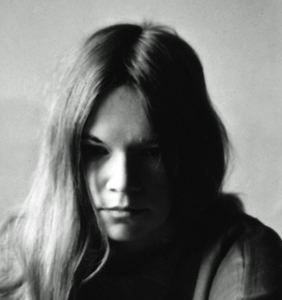
Rosemary Mayer (1943–2014) was an American visual artist who was closely associated with the feminist art movement and the conceptual art movement of the 1970s. She was a founding member of A.I.R. gallery, the first all-female artists cooperative gallery in the United States.
Douglas Melini is a New York City and New Jersey based American painter and a CalArts alumnus.
Adam Lindemann is a New York Based gallerist, art collector and writer who founded Venus Over Manhattan gallery in New York City in 2012. As an art collector and gallerist, Lindemann is known for setting multiple world records both at auction and privately, including career records for Jeff Koons, Takashi Murakami, Jean-Michel Basquiat and Jean Royère.
Berry Campbell Gallery is an art gallery in the Chelsea neighborhood of New York City. Its founders and directors are Christine Berry and Martha Campbell. The gallery focuses on historical and contemporary artists associated with American modernism.
References
- 1 2 "Feature owner / director Hudson interviewed by Dike Blair, spring 2004". www.featureinc.info.
- ↑ "Seeing Out Loud: Remembering Feature Gallery's Hudson".
- ↑ "Hudson 1950- 2014". www.featureinc.info.
- 1 2 3 Schmerler, Sarah (February 14, 2014). "Feature Inc.'s Hudson, 1950–2014".
- 1 2 3 4 5 Smith, Roberta (February 16, 2014). "Hudson, Gallerist and Nurturer of Artists, Dies at 63". The New York Times.
- ↑ "Charles Ray on Hudson". www.artforum.com.
- ↑ "Hello We Were Talking about Hudson | Soberscove Press". soberscove.com. Retrieved 2024-05-10.
- ↑ Stillman, Steel (February 14, 2014). "Histories: The Feature Story".
- ↑ "The Art World Remembers Hudson, Feature Inc.'s Visionary Dealer". Artspace.
- ↑ "Hudson (1950–2014)". www.artforum.com.